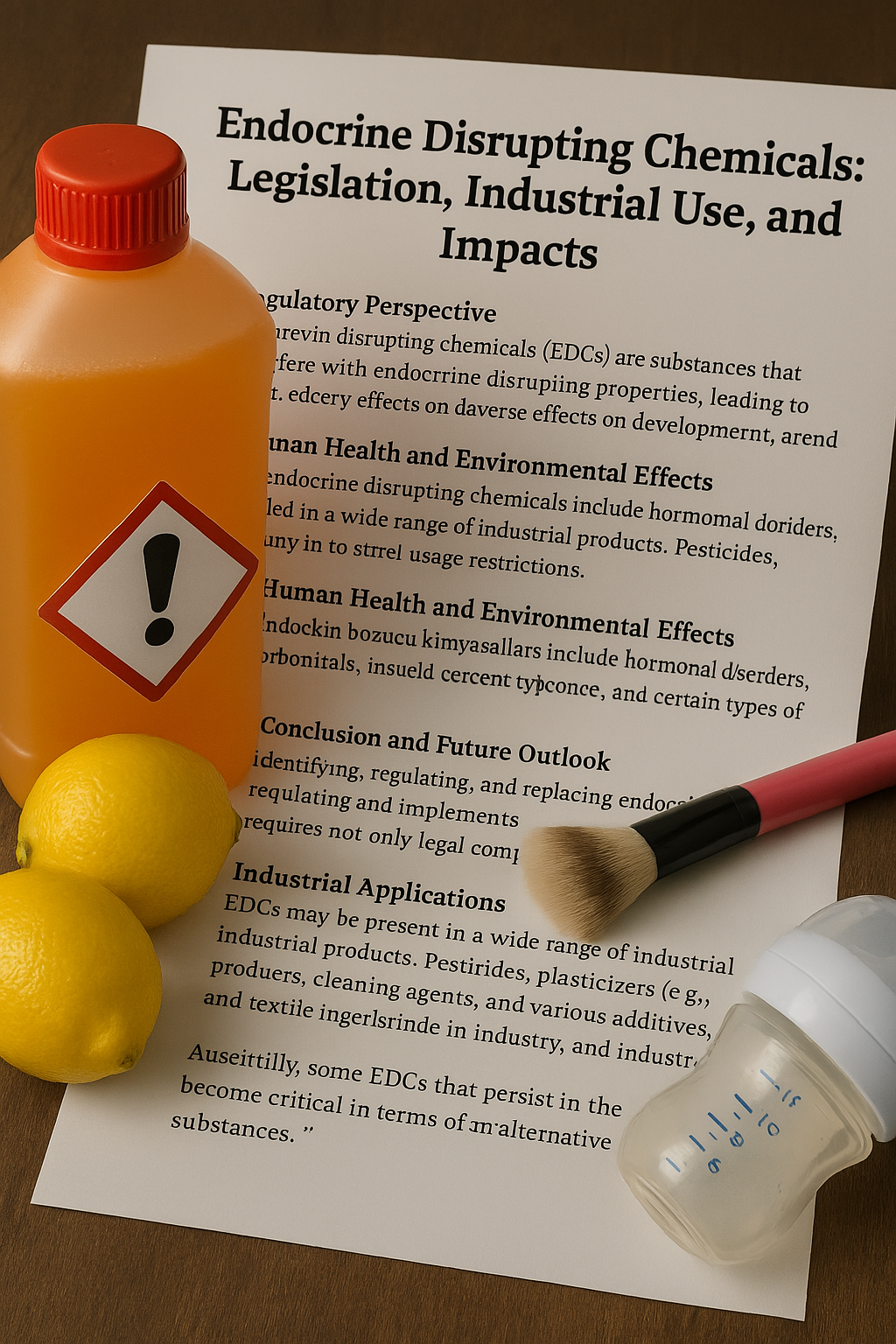Very Persistent and Very Bioaccumulative (vPvB) Substances: Regulatory Landscape and Industrial Applications
In chemical risk assessments, vPvB substances are among the compounds requiring the most careful consideration from an environmental perspective. Defined as Very Persistent and Very Bioaccumulative, these substances pose serious risks to both human health and ecosystems due to their ability to remain unchanged in nature for long periods and to accumulate extensively in living organisms. The European Union’s REACH and CLP regulations, along with Türkiye’s KKDIK and SEA frameworks, aim to control the use of these substances and reduce their presence wherever possible.
Regulatory Evaluation: Criteria and Restrictions for vPvB Substances
Under Türkiye’s KKDIK Regulation and the EU’s REACH framework, a substance must meet the following criteria to be classified as vPvB:
- Very Persistent (vP): It degrades extremely slowly through biological processes in water, soil, or sediment. This means the substance can remain in the environment for many years without breaking down.
- Very Bioaccumulative (vB): It has a high bioaccumulation potential in organisms, indicating its ability to build up in living tissues at concentrations significantly higher than in the surrounding environment (e.g., bioconcentration factor [BCF] ≥ 5000 in fish).
vPvB substances are recognized under REACH as “Substances of Very High Concern” (SVHC) and may be included in the Candidate List published by the European Chemicals Agency (ECHA). The EU’s CLP Regulation requires that the hazards associated with these substances be clearly stated on labels. However, no specific GHS pictogram has been assigned to the vPvB classification. In Türkiye, label elements specifically addressing this category have not yet been officially published in the Official Gazette, and therefore have not been implemented.
Industrial Use and Challenges: The Search for Alternatives
vPvB substances are often found in specialized applications such as industrial lubricants, persistent flame retardants, certain fluorinated compounds, and perfluorinated chemicals (PFAS). Despite their functional advantages and unique properties in industrial settings, their environmental persistence presents significant challenges. Once released into the environment, their stability makes them incredibly difficult, if not impossible, to remove.
Although the development of alternative substances is strongly encouraged under green chemistry principles, the inherent high durability and chemical stability of vPvB compounds complicate this transition. In many cases, substitutes may not offer the same technical performance, and concerns regarding cost and feasibility further complicate the decision-making process for industries.
Human Health and Environmental Impacts: A Long-Term Threat
Human Health
- vPvB substances may not be acutely toxic, but long-term exposure can lead to indirect health effects.
- In particular, perfluorinated compounds (PFAS) have been associated with endocrine disruption, and certain types have been linked to an increased cancer risk.
- Uptake through the food chain (especially via contaminated water or fish consumption) significantly increases risk, particularly for vulnerable populations such as children, pregnant women, and the elderly. These substances can accumulate in organs, potentially causing damage over time.
Environment
- vPvB substances disrupt ecosystems by bioaccumulating within aquatic systems and magnifying throughout the food web. This can affect predator-prey relationships and threaten the health of various species.
- Because they do not degrade, they cause long-term contamination of soil and water—leading to environmental damage that is difficult to reverse. Their persistence in soil can pollute agricultural areas, while their longevity in water can contaminate drinking water sources.
Conclusion: Prioritizing Public Health and Ecological Integrity
Although vPvB substances may not exhibit immediate toxicity, their long-term persistence and bioaccumulative nature necessitate strict regulatory oversight. Their use in industry must be carefully evaluated; safer alternatives should be promoted, risk communication must be strengthened, and regulatory frameworks should be updated in light of scientific advancements to prioritize the protection of public health and ecological integrity. This is not merely a legal obligation but a shared responsibility to ensure a livable planet for future generations.
